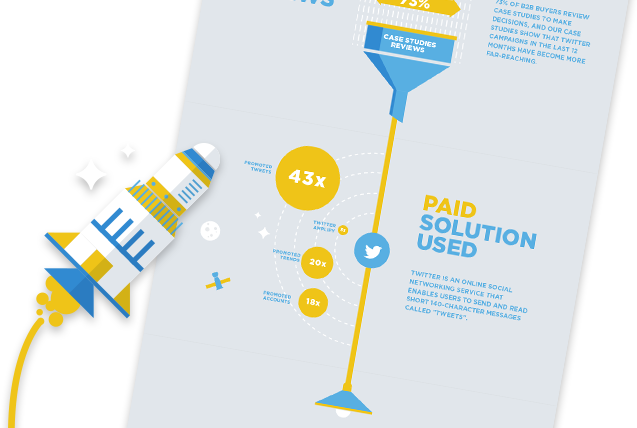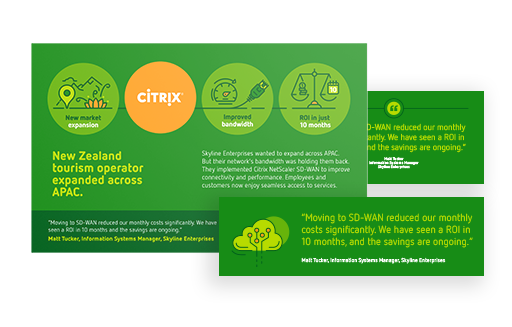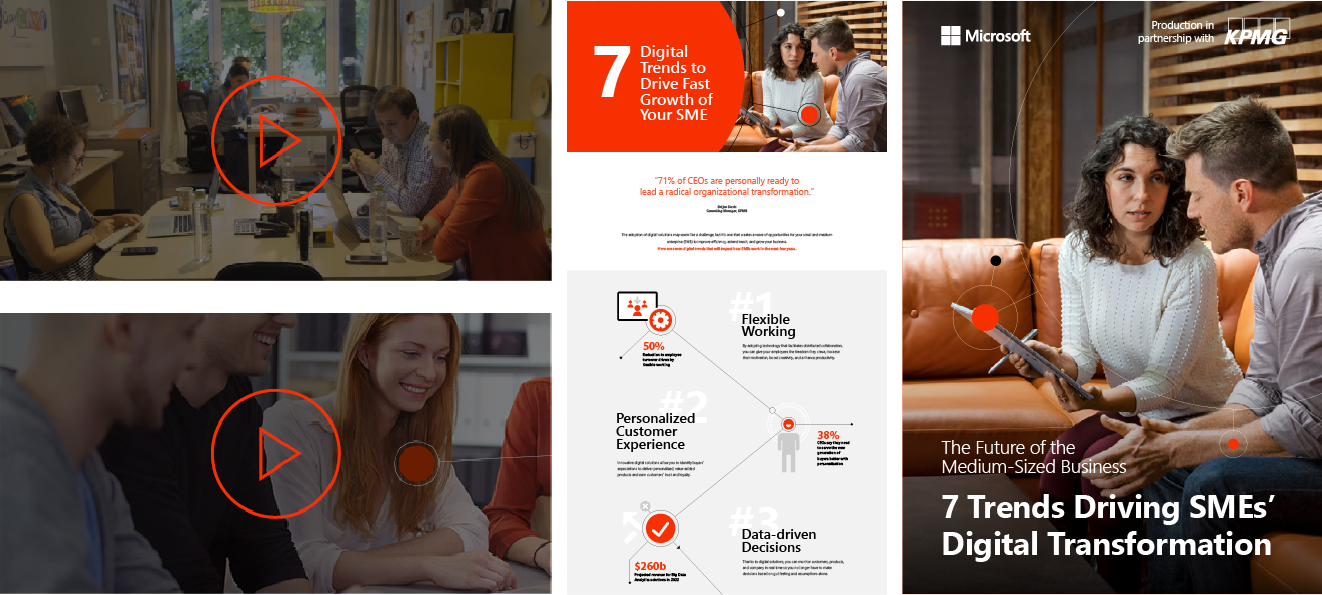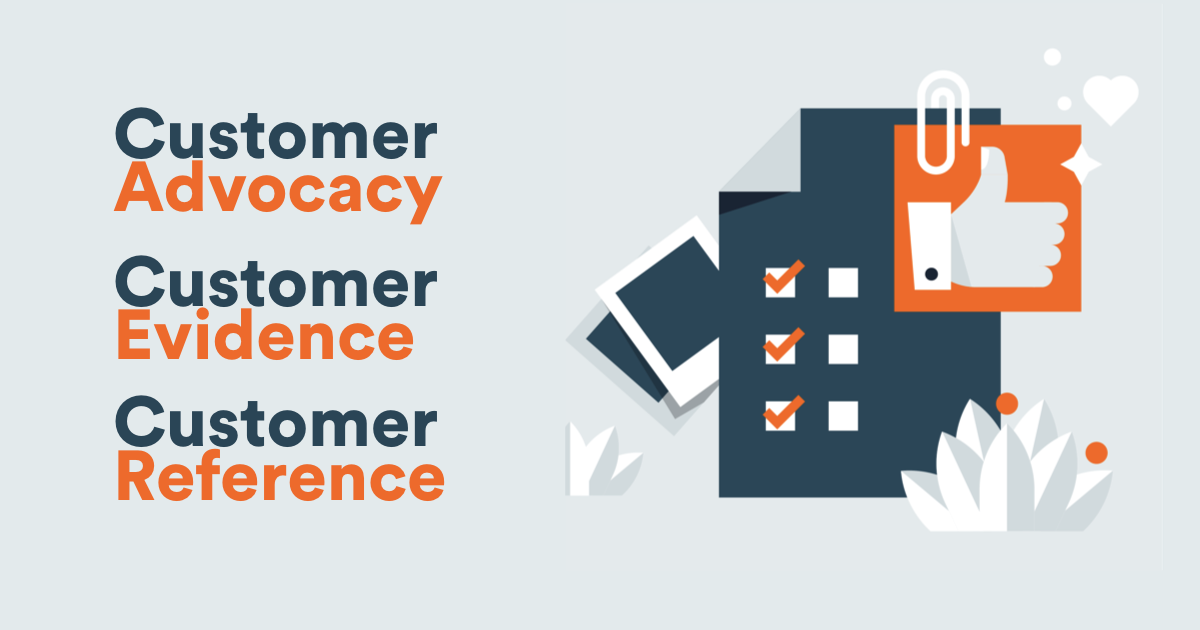
Today, the most important person selling your product or service is no longer you—it’s your customer. This means it’s all about customer engagement and how it can be beneficial for you, your customer, and your prospects. It is important to keep in mind that though the names Customer Advocacy, Customer Evidence and Customer Reference may sound similar, they are different terms - which we will cover in more depth next.
Customer advocacy
Happy customers = happy advocates. Building a customer advocacy program means you are involving your advocates in processes across many departments. It’s broad and comprehensive, not only from a management perspective but also in terms of measurement, as there are a range of ways to evaluate success, depending on the needs and preferences of different departments.
The purpose of an advocacy program is to involve as many customers in as many ways as possible – leading to a snowball effect over time. Some activities here may result in references for sales, but can also include participation at events, online engagement in review sites and social media, content production, help with new product design, and even product development.
When building an advocacy program, you can craft and adapt the customer involvement to fit changing business needs.
Customer evidence
It has been demonstrated that 70-90% of the buyer’s journey is completed before speaking with a salesperson, much of which comes from content, often from their peers. What’s more, 92% of buyers trust references and referrals from people and peers they know. This means that you need to find a way to get to that shortlist of recommended companies!
The best way to do so is by building customer evidence content; positive and authentic stories about how a company’s product or solution enabled a customer to overcome a challenge. The stories are told from the customer perspective but in a way that portrays the customer in the most positive light possible. This makes it more trustworthy than traditional branded content.
It’s taking the positive experiences of loyal customers and turning them into smart content people will be more likely to engage with. This positive portrayal encourages sharing by the featured customer, in addition to being usable for internal marketing and sales purposes. Such pieces change the tone of conversation surrounding your organization by using your best customers to better engage new prospects in the buying process. They can be utilized by different departments in the company including marketing, sales, PR, and others.
One of the biggest differences between these programs is in how much involvement your customer has and how much of an impact they have on your success. A customer evidence program is not as comprehensive as customer advocacy, as your customers aren’t involved in every department or process happening within your company. However, it can have a huge impact; they do help to build your credibility, acquire new customers and close deals faster, as well as generate more (and better) leads. As it doesn’t involve so many departments, you can see outcomes and program results much faster. This program can include customer references, but isn’t limited to them.
To conclude, customer evidence program can be a great way to capture and organize positive stories told from a customer's point of view and to amplify them to help sales and marketing better sell your business’ products or services.
Customer reference
What’s better than a strong customer endorsement? Lots of them. Customer reference is taking customer quotes and turning them into either content assets (like short videos with customer quotes or visual quotes on website) or activities (eg reference calls between your happy customer and prospect). It’s about aligning your happy customers with qualified prospects. If your company doesn’t run any of the programs described above, but it does want to integrate a customer reference program, it means that you’ll need minimal involvement from customers. The focus is around getting to the happy customer, conducting interviews, and producing customer reference assets from the information collected. As mentioned before, some of the most effective formats include slides with quotes, content for website and brief videos.
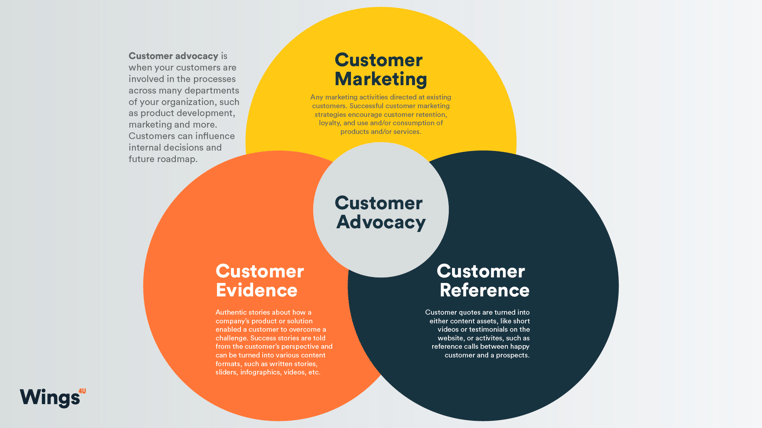
If you are interested in starting your own customer evidence program, but aren’t really sure where to begin, check out our free ebook Customer Evidence 101: How to Turn Customer Success into Marketing Bliss with a primer on what you need to know before getting started.



